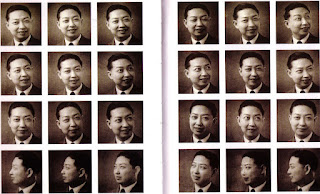
More than 15 years ago
Teatro Potlach, from Italy, visited Mexico City to offer some master classes and courses about their technical work.
At that time I was working for “Escenología” and I was part of the small company that Edgar Ceballos, the director, was preparing and which never made it to its first performance
(1).
Everything around us was about physical actions, from Grotowski’s point of view as well from Theatre Anthropology’s views researched at
I.S.T.A. (International School of Theatre Antrophology) (2), so these series of courses and master classes were very important for our development.
Teatro Potlach, Pino di Buduo (their director) and their actresses exhibited a concrete example of what our work could be in the future but, even more important, they were a reference point for a total comprehension of that technique we were trying to assimilate.
Creating physical actions, editing the line of actions, understanding the dramatic chain inside the line of actions by the player (the creator), those were really difficult points to comprehend; in general, practicing and working with details is the solution, but examples were absolutely necessary. So, how did
Teatro Potlach show those points within a 1 hour master class?
At one point, one of the actresses called our attention; after showing in many acting ways the creation process of physical actions and how they become a chain of actions and a final story on stage, she decided to use a final example which comprised all the points in synthesis, an example that didn’t come from Theater but from Art: a singular scene from the documentary
“Le Mystère Picasso”.
That scene showed us Picasso painting live before the camera and creating a painting in a minimal lapse of time: 5 minutes. We observed the development of creating a piece of art, in actions (in this case painting actions) which exemplified that chain of actions we were trying to understand before. The painter had many levels of creation, every one apparently independent from each other but inevitably connected: Picasso first painted three sunflowers, after that and over it a fish, after that and over it a cock, finally adding colour over all the images depicted before arriving to the conclusive figure, a Picasso painting.
That final figure was a result of each one of the others, step by step, but in the end, who couldn’t watch the process could only see the end result, the final figure, the final story.
Those 5 minutes were decisive for my professional activity, Picasso, as a genious, taught me, by creating, how every action could be woven with others to finally create the story we were looking for. Since that moment I’ve just continued exploring my way of weaving actions, literary actions, physical actions, image-actions. Picasso and his process are still working in my memory.
Well, after more than 15 years of my seeing this documentary at the old “Escuela de Bellas Artes” in Mexico, I found this video on sale inside a Chinese shop. I couldn’t resist sharing it, so you can use those images as you wish.
If you are interested in the whole documentary, a simple “google search” will direct you to Amazon or any other dedicated site.
(3)"Le Mystère Picasso"A film produced and directed by H.G. Clouzot
With: Pablo Picasso
Paris, France, 1956.
(1) Escenología... that company didn’t become a reality, but the experiences we lived there formed an epoch in my life. Escenología must be a pretext for many posts in this Blog.
(2) For information about I.S.T.A. visit: http://www.odinteatret.dk/ista/ista.htm
(3) About the documentary:
http://topdocumentaryfilms.com/the-mystery-of-picasso/







